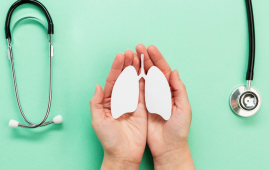Remote Patient Monitoring (RPM) is a technology that is gaining momentum in the healthcare industry. It entails monitoring a patient’s health condition remotely. A patient may stay at home and the doctor can still monitor how the patient is and give necessary advice. This can help doctors manage acute and chronic infections without having to confine patients to the hospital. Here we look at how this technology can benefit patients with chronic conditions.
How RPM Works?
Before delving into the benefits you stand to gain by using RPM, it is important to understand what this is all about. What is Remote Patient Monitoring and how does it work? It is the use of technology to collect patient data and later send it to a healthcare provider. He or she will then analyze the data and advise accordingly.
A patient is provided with a machine they need to monitor their progress. For instance, a glucometer machine is given to diabetes patients while Hypertension patients get blood pressure monitoring machines. These machines are connected (via Bluetooth or internet connection) to a network through which they transmit the data to a healthcare provider. When a doctor receives the data, he or she can analyze it and take the necessary action. What are the benefits this technology offers for chronically-ill patients?
Reduced Cost of Care
Suffering from a chronic condition means that you require medical care over a long period. The cost of this care can be high especially if you have to visit the hospital now and then. With RPM, your doctor can monitor you remotely. This means fewer visits to the hospital and hospitalization. You will see a significant decrease in how much you spend on healthcare. Do not just think of the much you pay for consultation and hospital investigations. Also, add transportation costs and accommodation for your caregiver. Embracing RPM will cut your costs by a big margin.
Timely Healthcare Interventions
Vital data is transmitted to your healthcare provider in real-time. The necessary action can be taken immediately. In medicine, timely interventions make a huge difference. A sudden decrease in blood sugar levels in a diabetic patient can cause one to end up in critical care if it is not caught early. If it is caught early and timely intervention is given, a patient can continue staying home.
With RPM, you do not have to wait until your condition deteriorates to seek medical attention. Your doctor can tell when you need a change in medication or a hospital visit. Follow the advice given.
Better Prognosis
Prognosis is the progression of a medical condition. It may be good in that a patient gets better with time or bad in that a patient’s condition deteriorates. RPM allows a good prognosis to be obtained. Timely care and patients recuperating from home are some of the factors that contribute to a better prognosis. Patients get care from the comfort of their own homes. This keeps them in a good state of mind which is important in recuperation.
Reduction in Monitoring Errors
Chronic conditions require patients to monitor certain parameters often. For instance, Hypertension patients are required to check their pressure and note it down. They are then required to take this to the next doctor’s visit. Mistakes in these records are common. Some patients do not write the right figures while others forget to bring the chart to the doctor.
RPM captures stores and transfers all critical data to your healthcare provider. You do not need to worry about cramming or recording what your values are all the time. This technology will keep all the data for you. Just concentrate on taking care of yourself and doing what the doctor says.
Conclusion
Remote Patient Monitoring is a technology that has eased patient care in so many ways. Those dealing with chronic illnesses have benefited in many ways. From decreased hospital visits to improved care and better prognosis, there are many benefits one stands to gain. This technology also benefits doctors in that it frees them up.
With the ability to monitor patients remotely, the doctor’s office will not be as crowded as before. They have the time to relax and think of better ways to treat their patients. This benefit still trickles down to the patient who will get better care.











Leave a Comment